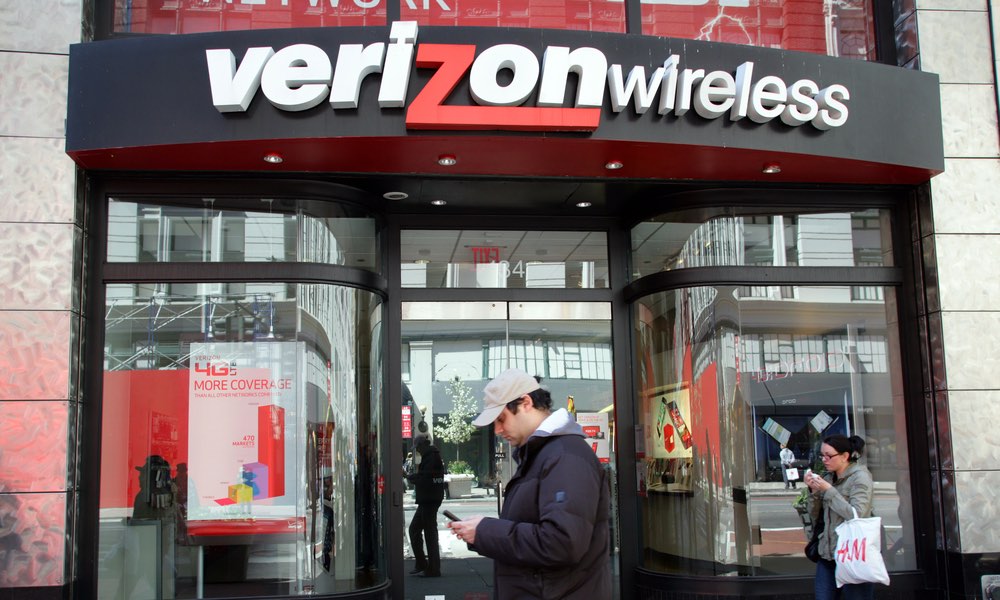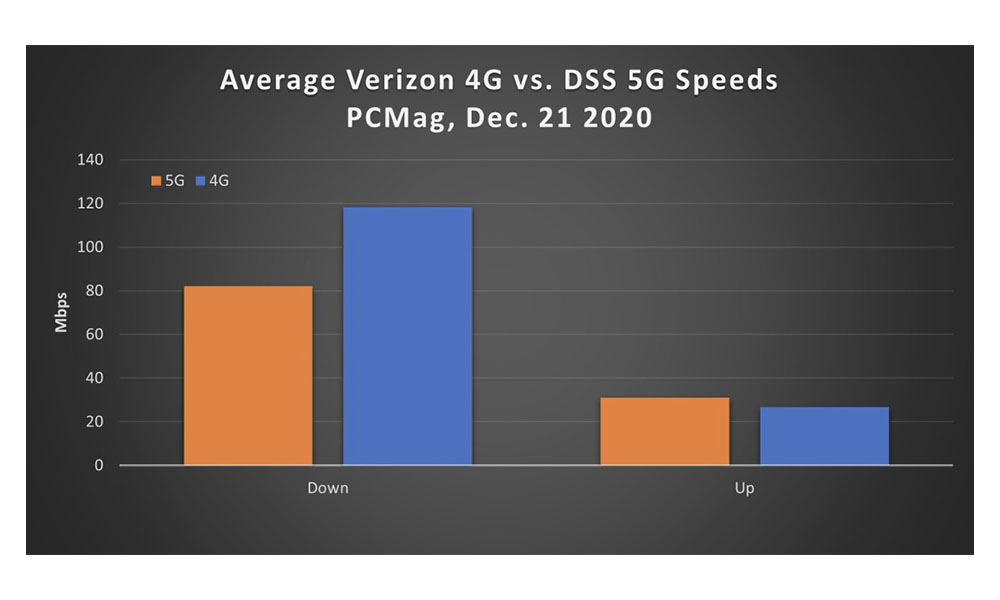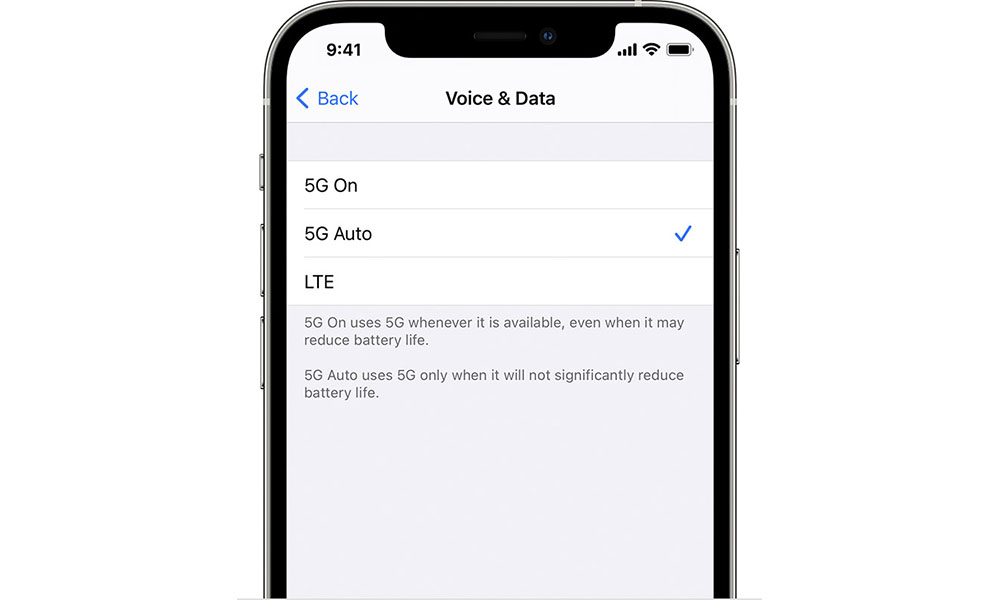Is Verizon’s 5G Really Faster? Not Necessarily
 Credit: Northphoto / Shutterstock
Credit: Northphoto / Shutterstock
Toggle Dark Mode
The wide variety of “flavours” of 5G technology that are being rolled out in the U.S. right now have made the technology something of a confusing mess for owners of Apple’s new iPhone 12 models — or really of just about any 5G-capable smartphone — and now a new series of reports are showing that this may be the most confusing of all on Verizon, which has long laid claim to the fastest 5G network in the U.S.
Verizon’s lead in 5G performance comes from the fact that it began its network with leading-edge mmWave technology — a version of 5G that runs up in the 30GHz range, boasting multi-gigabit download speeds with the tradeoff of extremely limited range.
The result was that when independent research firms measured 5G speeds, Verizon came out on top. Massively on top, in fact, with download speeds that were twice as fast as any other carrier on the planet, and 4–5 times faster than those of its nearest U.S. rivals.
The catch of course is that Verizon’s insanely fast 5G speeds were limited to core major metropolitan areas due to the extremely short range of mmWave transceivers — usually estimated at around a couple of city blocks for each transceiver.
Hence, when Verizon CEO Hans Vestberg joined Apple on-stage to launch the iPhone 12 it also used the opportunity to announce that it would be rolling out its nationwide sub-6GHz network at the same time, effectively making sure new iPhone users could benefit from Verizon’s 5G coverage across the U.S., rather than falling back to 4G LTE when they wandered out of the relatively small urban mmWave zones.
Except that now it looks like most Verizon iPhone 12 users might be better off staying on 4G LTE.
4G Can Be Faster Than 5G?
According to a new series of tests conducted by PC Magazine, Verizon’s wide nationwide rollout has resulted in service that is so much slower than its metropolitan “Ultra Wideband” network (not to be confused with Apple’s U1 ultra wideband technology) that many Verizon iPhone users might actually be better off disabling 5G entirely.
While sub-6GHz 5G is considerably slower than mmWave 5G to begin with, PC Magazine’s Sascha Segan reveals that there’s a bit more to this in Verizon’s case, pointing to a feature known as DSS, or “dynamic spectrum sharing,” which actually borrows from 4G LTE channels to carry 5G signals.
Phones will automatically prefer a 5G network over a 4G one, so Verizon customers will see that coveted 5G icon pop up. But it’s all for show. Our most recent tests, using an iPhone 12 Pro in New York City, show that DSS 5G is frequently slower than 4G, and rarely faster.
Sascha Segan, PC Magazine
Dubbing DSS as “a desperately slow system,” Segan goes on to explain how Verizon has basically taken a shortcut in rolling out its nationwide 5G network by using the leftover pieces of 4G channels for 5G service — a pretty big departure from the ideal vision of 5G, which is to use wider dedicated channels for 5G traffic — even in the sub-6GHz ranges.
Obviously using broader channels is exactly what Verizon’s mmWave UWB service does, but of course it has a lot more spectrum to play with up in the 30GHz stratosphere, where basically no other cellular or even Wi-Fi signals are flying around. Down under 6GHz, things are considerably more crowded, although this hasn’t stopped T-Mobile from making better use of wider channels for its newer (and faster) mid-band 5G.
Of course, to be fair, even T-Mobile’s performance on its nationwide 600MHz network doesn’t come in significantly faster than 4G LTE speeds, but at least it’s a bit faster. While early tests from last spring showed T-Mobile at the very bottom of the scale, 5G still offered a measurable improvement overs its 4G LTE speeds, and this only stands to have improved since T-Mobile began rolling out its “standalone” network, no longer piggybacking on its 4G LTE network, where it was also likely using some form of DSS.
To be fair, Verizon has also been aggressively expanding its UWB 5G system, which is now available in more than 60 cities across the U.S., where many iPhone 12 users really are getting the blazing-fast 1Gbps+ download speeds that Verizon promises, but the nature of mmWave is such that even if you live in one of those cities the experience can be hit-and-miss, and if you find yourself without that little magical “UW” indicator, you might actually find that 5G places you at a disadvantage over using 4G LTE.
I took the iPhone 12 Pro to eight locations around New York City, where I compared 4G and 5G speeds. At the first seven locations, the 5G was DSS and generally slower than 4G. At the eighth location, the 5G was UWB and impressively fast.
Sascha Segan, PC Magazine
The problem here is that when Verizon’s UWB isn’t available, your 5G iPhone will be competing with every other 4G LTE smartphone for the same channels, so your 5G iPhone is basically being dragged down by everybody else around you.
That said, DSS is supposed to offer some performance advantages like lower latency when using 5G, and there could be some implementation problems that Verizon and phone manufacturers like Apple still have to work out in terms of how DSS combines different channels of available spectrum, but right now the reality is that if you’re on Verizon there are actual demonstrable situations in which the “5G” icon on your iPhone 12 is not necessarily the holy grail of cellular technology, and you might be better switching it off.
As Segan points out, Verizon could also fix this problem simply by pushing all of its traffic over 4G LTE technology when it would be faster anyway, since as Signals Research discovered, it’s largely smoke and mirrors anyway — most of the “DSS 5G” traffic is simply travelling over LTE channels anyway and simply using 5G encoding.
While carriers and phone manufacturers obviously want users to see the magical “5G” icon as much as possible — and some have even gone to extreme measures to deceive customers into thinking they have 5G — it’s ultimately meaningless if 5G is going to deliver performance that’s no better than 4G, and in some cases is actually worse.
To be fair, the problem doesn’t seem to be limited to Verizon either, as Segan discovered that AT&T’s low-band “nationwide” 5G was also frequently slower than AT&T’s 4G network in the 26 cities where PC Magazine ran its speed tests.
Further, even though T-Mobile’s mid-band 5G approach may have its technical advantages — testing on the 2.5GHz T-Mobile networks provided speeds of up to 582Mbps — Verizon was still no slouch, offering up to 390Mbps in the same locations, which are still great speeds, especially for 4G.
The key takeaway from all of this should be to try and avoid getting too hung up on the little 4G or 5G indicator that appears on your iPhone 12, and recognize that as 5G technology still evolves across the U.S., it’s not always going to be an indicator that you’re getting the best speeds.
How to Disable 5G on Your iPhone
If you’re a Verizon customer and you’re not fortunate enough to live in an area that has any mmWave UWB coverage — that is, you never get to see the “5G UW” icon on your iPhone 12, there’s a good chance that you’re better off simply disabling 5G on your iPhone for now and hanging out on Verizon’s 4G LTE network instead. You’ll not only very likely get better speeds, but better battery life too.
Here’s how to disable 5G on your iPhone 12:
- Open the iPhone Settings app.
- Tap on Cellular.
- Tap on Cellular Data Options.
- Tap on Voice & Data.
- Tap on LTE.
There’s a good chance that this applies to you if you’re an AT&T customer as well, although in this case it’s a “5G+” icon that will indicate whether you’re using AT&T’s faster mmWave network. At this point, T-Mobile appears to be the only carrier that still has a consistent advantage to remaining on 5G, but it’s also traditionally had the slowest 4G LTE networks of the bunch, so that may not be saying very much.
To be clear, this is likely only going to be a short-term issue, since all of the U.S. carriers are continuing to aggressively expand their 5G technology offerings, and as Verizon and AT&T continue to add more dedicated 5G spectrum, their nationwide speeds are pretty much guaranteed to improve.








